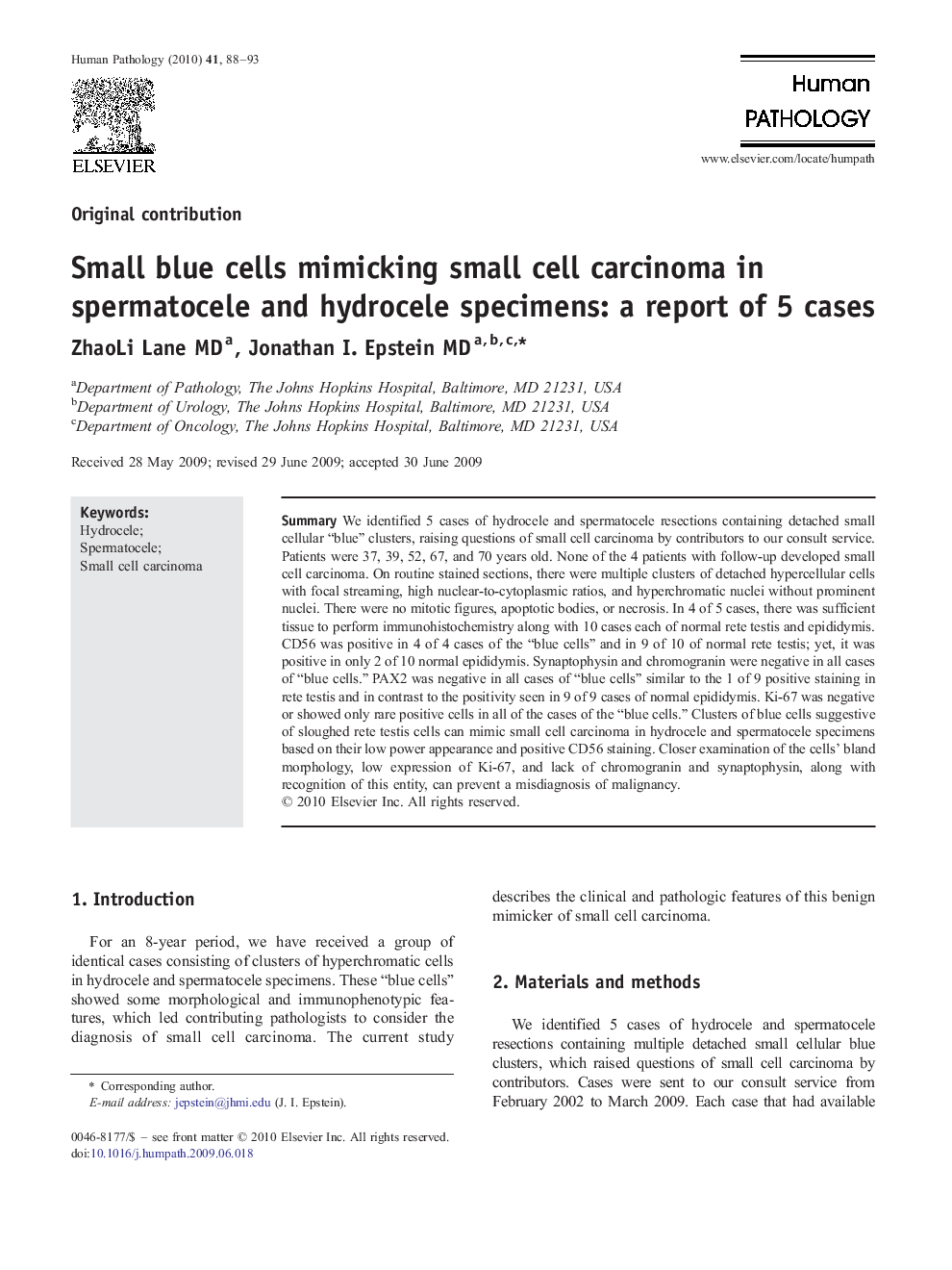| Article ID | Journal | Published Year | Pages | File Type |
|---|---|---|---|---|
| 4134383 | Human Pathology | 2010 | 6 Pages |
SummaryWe identified 5 cases of hydrocele and spermatocele resections containing detached small cellular “blue” clusters, raising questions of small cell carcinoma by contributors to our consult service. Patients were 37, 39, 52, 67, and 70 years old. None of the 4 patients with follow-up developed small cell carcinoma. On routine stained sections, there were multiple clusters of detached hypercellular cells with focal streaming, high nuclear-to-cytoplasmic ratios, and hyperchromatic nuclei without prominent nuclei. There were no mitotic figures, apoptotic bodies, or necrosis. In 4 of 5 cases, there was sufficient tissue to perform immunohistochemistry along with 10 cases each of normal rete testis and epididymis. CD56 was positive in 4 of 4 cases of the “blue cells” and in 9 of 10 of normal rete testis; yet, it was positive in only 2 of 10 normal epididymis. Synaptophysin and chromogranin were negative in all cases of “blue cells.” PAX2 was negative in all cases of “blue cells” similar to the 1 of 9 positive staining in rete testis and in contrast to the positivity seen in 9 of 9 cases of normal epididymis. Ki-67 was negative or showed only rare positive cells in all of the cases of the “blue cells.” Clusters of blue cells suggestive of sloughed rete testis cells can mimic small cell carcinoma in hydrocele and spermatocele specimens based on their low power appearance and positive CD56 staining. Closer examination of the cells' bland morphology, low expression of Ki-67, and lack of chromogranin and synaptophysin, along with recognition of this entity, can prevent a misdiagnosis of malignancy.
